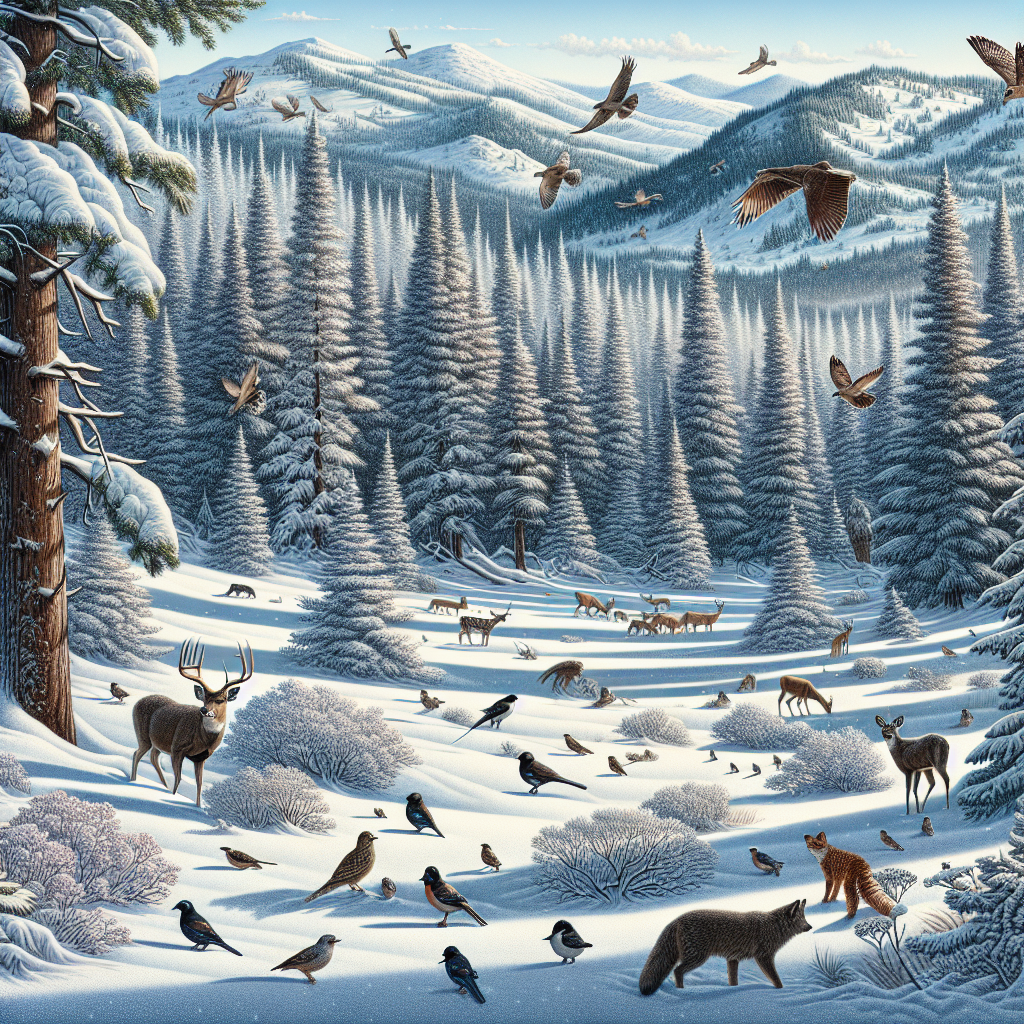Title: Discover Winter Wildlife Watching in Oregon: A Local’s Guide to Ice-Cold Adventure
Introduction:
When the snow begins to fall, Oregon transforms into a veritable wonderland, replete with a magic that would make even the most jaded city-dweller’s heart skip a beat. Now, while many retreat indoors during the winter months, seasoned Oregonians know that the real show is just getting started. Oregon’s winter wildlife is nothing short of spectacular, with creatures big and small embracing the frosty embrace of the season. Let’s take a neighborhood spin together, on the lookout for feathered, furred, and finned friends who call the winter wonderland home.
Section 1: Where to Go
Down South and Under Snow-Capped Peaks:
Around Mount Bachelor, animal tracks crisscross the blankets of snow. Look out for river otters playfully sliding down the banks of the Deschutes River or mule deer lightly stepping through powdery flurries. Remember, as with any wildlife watching activity, it’s important to keep a respectful distance to keep both you and the animals safe.

Venturing West to the Coasts:
Head towards the coast and the panorama changes drastically. Even on the coldest days, the rocky headlands of Yaquina Head Outstanding Natural Area remain a hotbed of activity. Risso’s dolphins or grey whales might make an appearance offshore. Be sure to bring a sturdy pair of binoculars and dress in layers, as coastal weather is notorious for its rapid changes without notice.
Section 2: What to Watch For
Frosty Feathers:
Oregon’s birdlife is nothing short of captivating during the winter months. Bald eagles set up shop around Klamath Lake, while the feisty dark-eyed juncos dominate the feeders around Bend. And let’s not forget the graceful trumpeter swans making a pit stop at Summer Lake Wildlife Area during their seasonal travels. Grab a hot coffee from Strictly Organic – a local favorite – and relish these chilly avian performances.
Glistening Mammals:
Coyotes have a certain elegant charm that’s emphasized in the frosty environment, especially in the Steens Mountain region. These lithe animals blend seamlessly with the arctic surroundings, making spotting them a bit of a challenge but equally rewarding. Elk herds are another fascinating spectacle. Journey to the Dean Creek Elk Viewing Area just east of Reedsport for a truly memorable encounter. Remember, these are wild animals and it’s best to observe them from a safe distance.
Aquatic Frolics:
Finally, the Columbia River Gorge, despite its icy waters, supports an impressive range of aquatic organisms. Winter steelhead trout fill the Hood River tributaries around December, and sea lions are often sighted at Astoria’s East Mooring Basin. Don’t forget to dress warm and pack some hot beverages to counter the cold river winds.
Section 3: Insider Tips
Embracing the outdoors during winter in Oregon requires a bit of preparation. The best advice?- Pack warm clothing, dress in layers, and ensure to have a sturdy pair of boots. More importantly, plan and understand the unpredictability of the weather. It can cause sudden changes in terrain and accessibility. Snow chains or a four-wheel drive vehicle can be lifesavers if you’re venturing off the beaten paths.
Every local will tell you; there’s hardly anything more rewarding than spotting an animal in its natural habitat yet, it does require patience. A thermos full of locally brewed coffee or hot chocolate aids in making the wait enjoyable.
In Conclusion:
There’s a quiet beauty that comes with the arrival of winter in Oregon. From the chill-laden coast to the tranquiloni_twakuwinesofs snow-clad mountains, the landscape dances with a serene symphony of life, making it an absolutone_twakufor anyone passionate about wildlife. As any Oregonian would say, there’s no such thing as bad weather, only bad gear. So, bundle up, brace the cold, and venture out into the wild – a breathtaking display of nature’s magic awaits in every snowflake.
